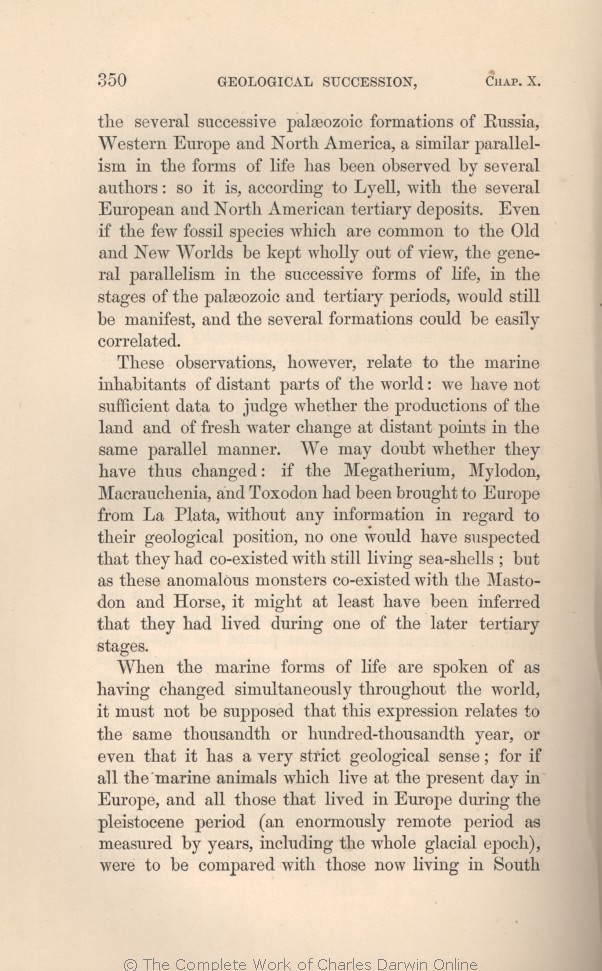the several successive palæozoic formations of Russia, Western
Europe | Europe 1859 1860 1861 | | Europe, 1866 1869 1872 |
| authors: 1859 1860 1861 1866 1869 | | authors; 1872 |
| several 1859 1860 1861 1866 1869 | several 1872 |
| be 1859 1860 1861 1866 | | were 1869 1872 |
| stages of the 1861 1866 |
| stages of the widely separated 1859 1860 |
| OMIT 1869 1872 |
| tertiary 1859 1860 1861 1869 1872 |
| of the tertiary 1866 |
| periods, 1859 1860 1861 1866 | | stages, 1869 1872 |
|
|
These observations, however, relate to the marine inhabitants of
distant parts of | distant parts of 1859 1860 1861 1866 |
| OMIT 1869 1872 |
| change at distant points 1859 1860 1861 1866 |
| at distant points change 1869 1872 |
| co-existed 1860 1861 1866 1869 1872 | | coexisted 1859 |
| still living sea-shells; 1859 1860 1861 1866 |
| sea-shells all still living; 1869 1872 |
| co-existed 1860 1861 1866 1869 1872 | | coexisted 1859 |
| Mastodon 1861 1866 1869 1872 | | Masto- don 1859 1860 |
| later 1860 1861 1866 1869 1872 | | latter 1859 |
|
|
When the marine forms of life are spoken of
as | as 1859 1860 1861 1869 1872 | | us 1866 |
| thousandth 1859 1860 1861 1866 1869 | | year, 1872 |
| hundred-thousandth year, 1859 1860 1861 1866 |
| ten-thousandth year, 1869 |
| to the same century, 1872 |
| which live at the present day 1859 1860 1861 1866 |
| now living 1869 1872 |
| (an enormously 1859 1860 1861 1866 | | (a very 1869 1872 |
| epoch), 1859 1860 1861 1866 | | epoch) 1869 1872 |
| to be 1859 1860 1861 1866 | to be 1869 1872 |
| living 1859 1860 1861 1866 | | existing 1869 1872 |
|









